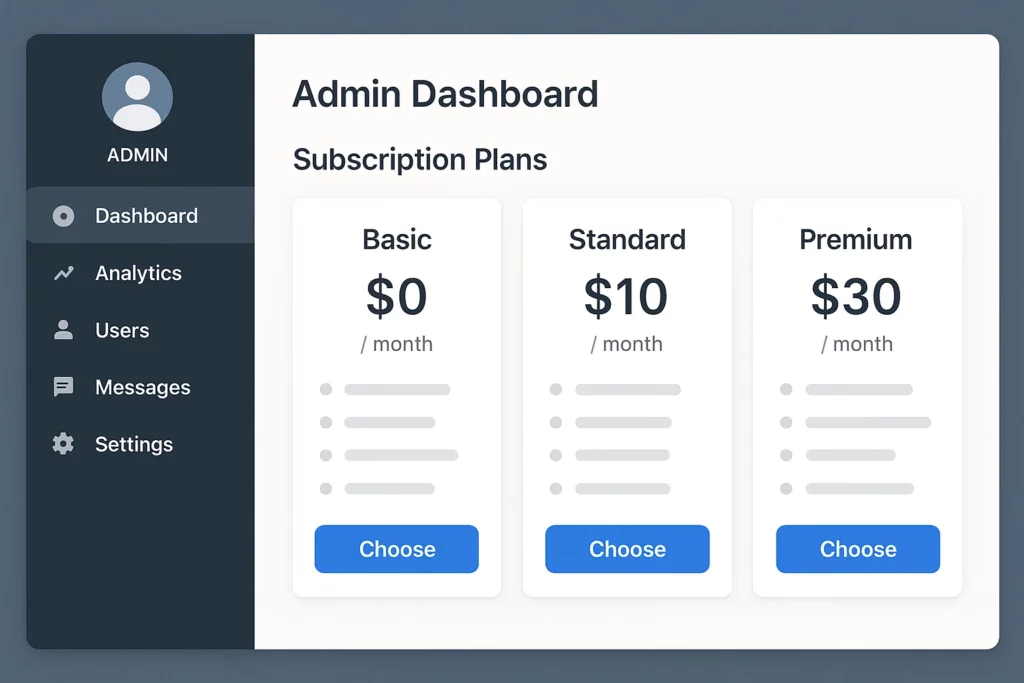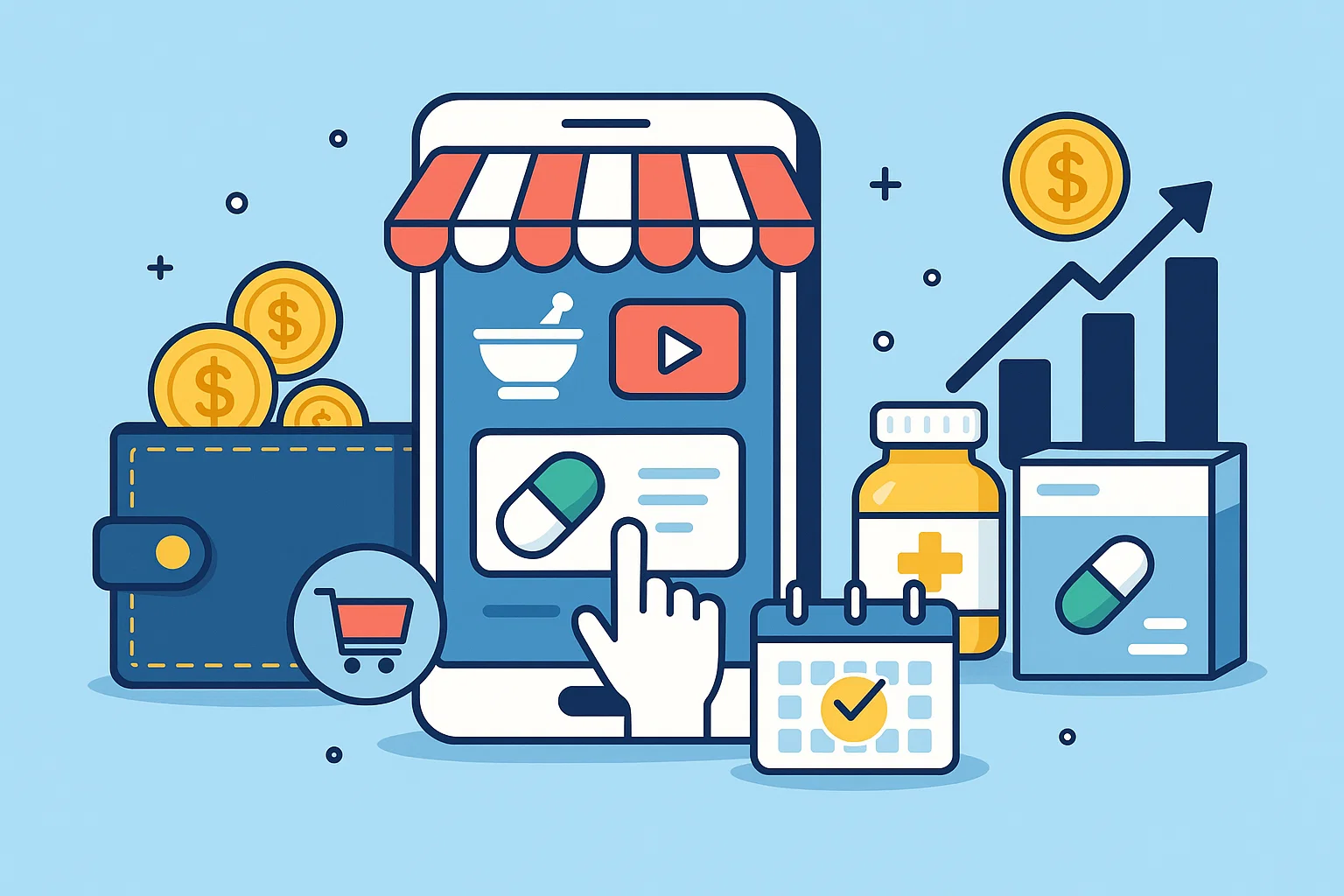Let’s face it — nobody grows up dreaming of running an online pharmacy app. But if you’re reading this, you’ve probably realized that healthcare and commerce are having a moment. And where there’s medicine, there’s money — not just in pills, but in pixels. What used to be a brick-and-mortar game is now being played through smartphones, one doorstep delivery at a time.
You don’t need a white lab coat to build something meaningful in healthtech. Whether you’re a digital creator with a heart for impact or a serial startup founder chasing the next billion-dollar vertical, online pharmacy marketplaces are a goldmine. But here’s the thing: not all monetization models are created equal. Some will pad your wallet. Others will drain your soul (and margins).
The good news? You don’t have to reinvent the wheel. At Miracuves, we help entrepreneurs build revenue-ready online pharmacy marketplace apps that are smart, scalable, and cloned to perfection.
Why Online Pharmacy Marketplaces Are a Hotbed for Monetization
Let’s talk big numbers. According to Statista, the global ePharmacy market is expected to surpass $180 billion by 2030. That’s not pocket change. COVID may have accelerated the demand, but it’s convenience, chronic care, and digital dependency that are fueling the long-term boom.
Pharmacies aren’t just about meds anymore. Users want wellness products, virtual consults, on-demand refills, health tips, and personalized packs — all at their fingertips. And businesses want to ride that recurring revenue wave while doing something that actually helps people.

Top Revenue Models for Pharmacy Marketplace Apps
1. Commission on Each Sale
This is the bread and butter of marketplace apps. You connect pharmacies or suppliers with customers and charge a % per sale — think Amazon for medicine.
- Typical range: 5%–20% per order
- Works well with high volume and multi-vendor setups
- Can be tiered by product category (prescription vs OTC vs wellness)
2. Subscription Plans for Pharmacies & Clinics
Not everyone loves paying per order. Offer subscription packages for vendors — they pay a monthly fee to list unlimited products, access premium features, or get data insights.
- Ideal for B2B-focused marketplaces
- Adds predictability to revenue
- Can be bundled with AI tools or analytics dashboards
Examples: NetMeds B2B, 1mg wholesale dashboards
Also Read :-How to Market a Pharmacy Marketplace Successfully After Launch

3. Featured Listings & Search Boosts
Pharmacies, wellness brands, and even private practitioners will pay to show up first — especially in crowded metros or during flu season.
- Sponsored product placement
- Geo-targeted promotions
- “Express delivery” badge as a paid add-on
4. Affiliate Marketing for Wellness Products
Let your app double as a recommendation engine. Suggest immunity boosters, health kits, and fitness devices — and earn from affiliate partners.
- Think non-prescription items with wide margins
- AI chatbots can recommend products contextually
- Adds extra layer of passive income
5. Premium User Subscriptions
Users love perks — faster delivery, doctor call priority, discounts. Offer a Prime-style membership to lock them in.
- Benefits like same-day delivery or early access to offers
- Health tips, curated wellness content, app-only flash deals
- Builds customer loyalty and recurring income
Sample Data to Plot:
| Metric | Freemium Users | Premium Subscribers |
|---|---|---|
| UAC | $4 | $9 |
| ARPU | $2 | $40 |
| LTV | $6 | $120 |
6. Teleconsultation Fees (Split Revenue)
If your app allows doctor chats, charge per consultation and share the fee with healthcare providers.
- Video consultations, prescriptions, health tracking
- Transparent fee split (e.g., 70/30 in favor of the doctor)
- Can bundle with diagnostic test bookings or e-prescriptions
7. White Label & SaaS Licensing
Let other players use your platform under their brand — hospitals, NGOs, corporate wellness startups, etc. You get paid monthly or per install.
- Perfect for companies wanting a ready-made solution
- Include customization, hosting, and maintenance
Learn More :-Smart Business Models Behind Successful Pharmacy Marketplaces
White-Label vs Commission Model ROI Comparison
| Criteria | White-Label Model | Commission-Based Model |
|---|---|---|
| Revenue Type | Fixed / Recurring (licensing or SaaS) | Variable (per transaction or order) |
| Initial Setup Cost | Higher (custom branding, hosting, deployment) | Lower (single marketplace build) |
| Scalability | Scales by selling more licenses or brands | Scales with user base and vendor acquisition |
| Profit Margin | High (predictable income per licensee) | Moderate (dependent on order volume) |
| Best Fit For | Agencies, enterprises, health orgs | Marketplaces, aggregators, startups |
| Maintenance Effort | Medium to High (client-side customization needed) | Low to Medium (central updates apply to all) |
| Revenue Predictability | High (monthly/annual deals) | Low to Moderate (fluctuates with sales activity) |
| Brand Visibility | Low (your tech under someone else’s brand) | High (you own the marketplace identity) |
8. Sponsored Health Campaigns
Partner with pharma brands to run awareness campaigns inside your app. From COVID boosters to vitamin drives — it’s a marketing win-win.
- Push banners, in-app quizzes, emailers
- Micro-influencer integrations possible
- Tie-ins with loyalty points or giveaways
Hybrid Models for Maximum Growth
Let’s be real — no single model does it all. The real magic happens when you mix and match.
- Commission + Featured Listings = Fast vendor growth
- Subscription + Telehealth = Reliable monthly income
- Affiliate + Campaigns = Passive and promo revenue
Miracuves Can Help You Monetize Like a Pro
Great ideas deserve great execution. That’s why Miracuves builds pharmacy marketplace clones that are fast, feature-rich, and monetization-ready out of the box. Whether you want multiple revenue channels, multi-vendor support, or AI integrations — we’ve got you covered.
Read More :-How to Develop a Pharmacy Marketplace App
Conclusion
Running an online pharmacy app is no longer about just “delivering meds.” It’s a full-on health commerce business. The key? Stack smart revenue models that work together.
At Miracuves, we help innovators launch high-performance app clones that are fast, scalable, and monetization-ready. Ready to turn your idea into reality? Let’s build together.
FAQs
How do I choose the best revenue model for my app?
Start with 1–2 models based on your audience and expand based on feedback. Testing beats guessing.
Can I run ads in a pharmacy app?
Yes, but stick to healthcare-related sponsors to maintain user trust.
What is the most profitable model for pharmacy marketplaces?
Commission + subscription + sponsored listings is the most balanced for revenue and scalability.
Is white labeling worth it?
Absolutely — if you can package your tech for others, it’s a solid passive income stream.
Do I need a pharmacy license to run this app?
Not necessarily. You can partner with licensed pharmacies and act as a tech facilitator. Check local laws.
Can I use affiliate links in prescription drug sales?
Usually no — but you can for OTC and wellness products. Always verify local ad and pharma regulations.
Related Articles :-








